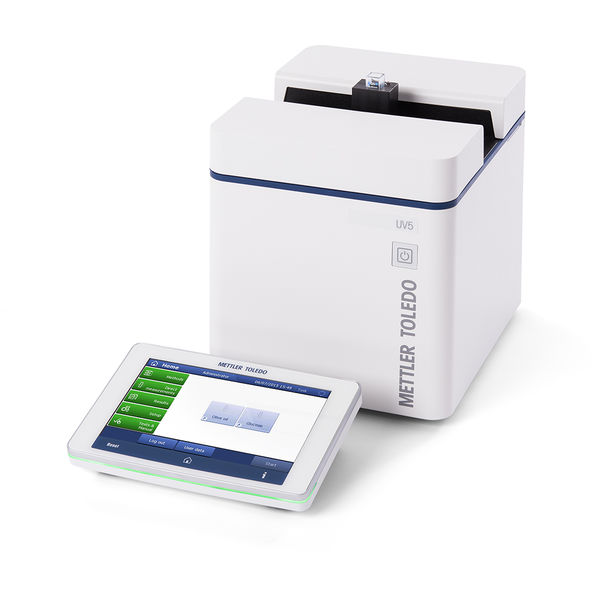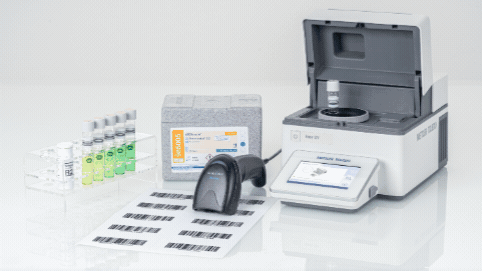Anorganické sloučeniny hrají zásadní roli v kvalitě vody. Jejich přítomnost nebo nepřítomnost může významně ovlivnit vodní život, lidské zdraví a průmyslové procesy. UV/Vis spektrofotometrie dokáže spolehlivě určit koncentraci různých anorganických látek.
Dusičnan
Dusičnany jsou sloučenina na bázi dusíku, která se běžně vyskytuje ve vodních útvarech. I když jsou nadměrné hladiny dusičnanů nezbytné pro růst rostlin v malém množství, představují významná rizika pro životní prostředí a zdraví. Kontaminace dusičnany často pochází ze zemědělského odtoku, vyluhování z hnojiv a vypouštění odpadních vod. Vysoké koncentrace dusičnanů v pitné vodě mohou vést k vážným zdravotním problémům. Dusičnany navíc přispívají ke škodlivému kvetení řas a vyčerpání kyslíku ve vodních útvarech. UV/Vis spektrofotometrie je široce používaná metoda pro stanovení koncentrací dusičnanů, která umožňuje efektivní monitorování a řízení kvality vody.
Amoniak
Amoniak je bezbarvý plyn se štiplavým zápachem, který se často vyskytuje v odpadních vodách a zemědělském odtoku v důsledku rozkladu organické hmoty. Vysoké hladiny amoniaku jsou toxické pro vodní organismy a narušují jejich dýchací systém. Kromě toho může amoniak také přispívat k eutrofizaci, což opět vede k vyčerpání kyslíku ve vodních útvarech. UV/Vis spektrofotometrie ve spojení s vhodnými činidly dokáže přesně určit koncentrace amoniaku, což umožňuje efektivní řízení kvality vody.
Fluorid
Fluorid je minerál nezbytný pro zdraví zubů, který zabraňuje zubnímu kazu. Přesné měření fluoridu je zásadní pro udržení optimální kvality vody a veřejného zdraví, a to nejen v pitné vodě, ale také v dentálních produktech. UV/Vis spektrofotometrie pomocí metod, jako je analýza komplexu alizarinu a zirkonylu, umožňuje přesné stanovení fluoridů ve vodě i dentálních výrobcích a zajišťuje shodu s bezpečnostními normami.
Fosforečnan
Fosfáty jsou základní živiny pro růst rostlin, včetně vodní vegetace. Nadbytek fosfátů však může stimulovat nadměrný růst rostlin, což vede k nerovnováze v ekosystému. UV/Vis spektrofotometrie je široce používána ke sledování koncentrací fosforečnanů ve vodních útvarech.
Chlorid
Chlorid je přirozeně se vyskytující anion nacházející se ve vodě. I když jsou v mírném množství nezbytné pro lidské zdraví, vysoké hladiny chloridů mohou vodě dodat slanou chuť a přispět ke korozi vodní infrastruktury. Kontaminace chloridy často pochází z průmyslových výbojů, pronikání slané vody nebo posypových solí silnic. UV/Vis spektrofotometrie může být použita k efektivnímu sledování hladin chloridů.
Arsen
Arsen je toxický metaloid přirozeně se vyskytující v některých zdrojích podzemních vod. Může také kontaminovat vodu průmyslovými činnostmi a zemědělskými postupy. Chronická expozice arsenu může vést k různým zdravotním problémům, včetně kožních lézí, dýchacích problémů a zvýšeného rizika rakoviny. UV/Vis spektrofotometrii v kombinaci s vhodnými technikami přípravy vzorků lze použít ke zjištění a kvantifikaci arsenu ve vodě.
Bór
Bór je základní mikroživina pro rostliny, ale při zvýšených hladinách může být pro člověka toxický. Bór, který se přirozeně vyskytuje v životním prostředí, si může najít cestu do vodních zdrojů z různých činností, včetně průmyslových procesů, zemědělství a louhování z hornin a půdy. Nadměrná konzumace boru může ovlivnit reprodukční zdraví a vývoj, zejména u dětí. Proto je sledování hladin boru ve vodě zásadní. UV/Vis spektrofotometrie v kombinaci s vhodnými analytickými metodami může přesně určit koncentrace boru, zajistit kvalitu vody a veřejné zdraví.
Železo
Železo je nezbytným prvkem pro živé organismy, ale nadměrné množství ve vodě může způsobit estetické problémy, jako je změna barvy a skvrny. Železo může také přispívat k růstu bakterií železa, které mohou ucpat potrubí a snížit průtok vody. UV/Vis spektrofotometrie je běžnou metodou pro stanovení koncentrací železa ve vodě, která umožňuje účinnou léčbu a prevenci problémů souvisejících se železem.
Měď
Měď je nezbytným stopovým prvkem pro lidské zdraví, ale nadměrná expozice může vést k otravě mědí, charakterizované gastrointestinálními příznaky, poškozením jater a problémy s ledvinami. Měď se může dostat do vodních útvarů z průmyslových výpustí, koroze měděných trubek a zemědělského odtoku. UV/Vis spektrofotometrii lze využít ke sledování hladiny mědi ve vodě.
Hořčík
Hořčík je životně důležitý minerál, který významně přispívá k tvrdosti vody. I když je nadměrné množství hořčíku nezbytné pro lidské zdraví, může ovlivnit kvalitu vody a každodenní činnosti. Koncentrace hořčíku se značně liší, přičemž mořská voda obsahuje výrazně vyšší hladiny ve srovnání se sladkovodními zdroji. Udržování optimální hladiny hořčíku je zásadní pro prevenci tvorby vodního kamene, zajištění účinného výkonu čisticího prostředku a zajištění dlouhé životnosti systémů na bázi vody. UV/Vis spektrofotometrie v kombinaci s vhodnými činidly může přesně určit koncentrace hořčíku, což pomáhá při úpravě a hospodaření s vodou.
Olovo
Olovo je vysoce toxický kov bez známé bezpečné úrovně expozice. Může se hromadit v těle a způsobovat vážné zdravotní problémy, zejména u dětí. Kontaminace vody olovem často pochází ze starých olověných trubek, průmyslových výbojů a olovnatého benzínu. UV/Vis spektrofotometrie může být použita jako součást komplexního programu testování olova k ochraně veřejného zdraví.
































